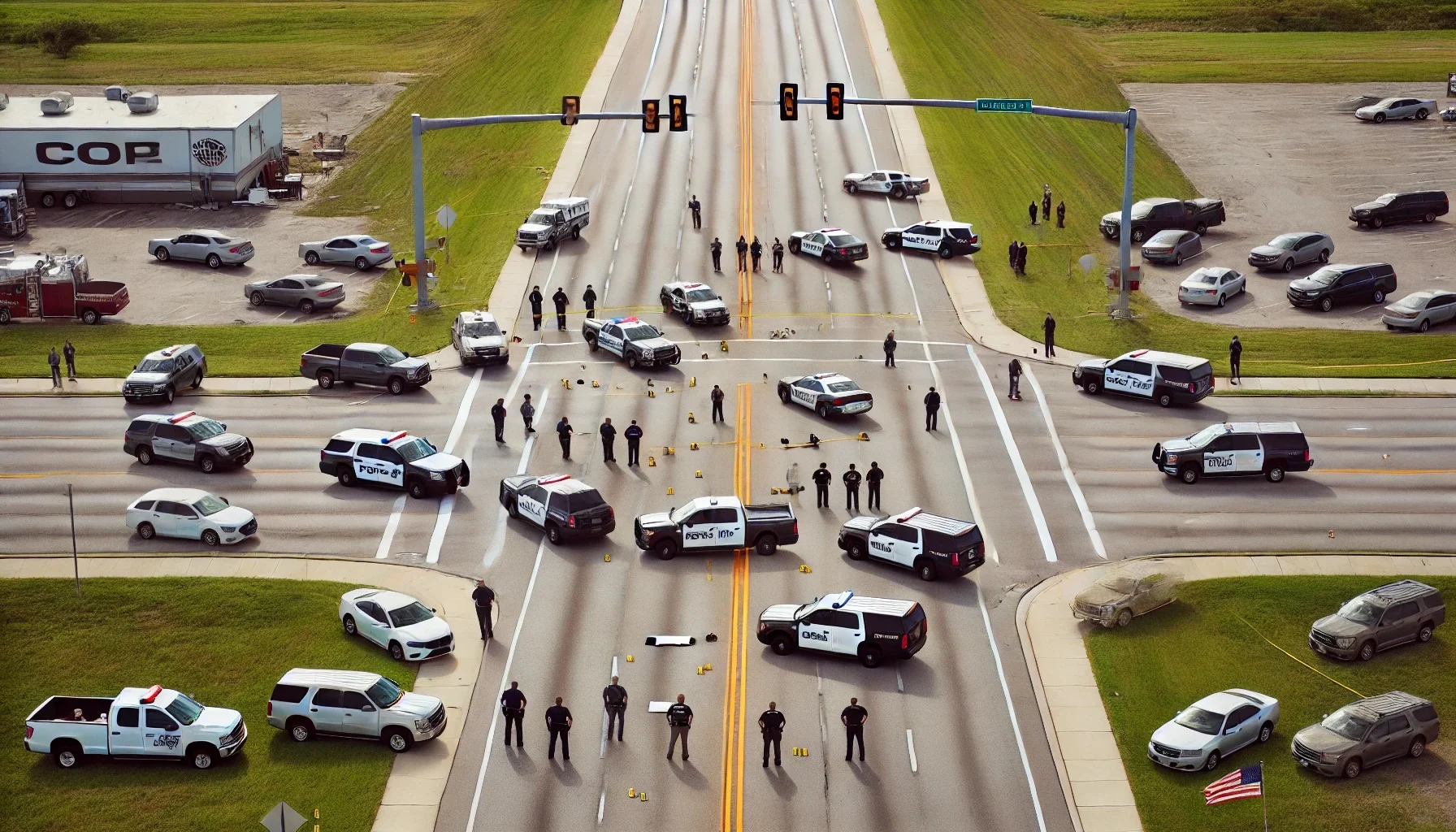
The Baton Rouge Police Shooting
by: The Calamity Calendar Team
July 17, 2016
A City on Edge
The morning of July 17, 2016, in Baton Rouge, Louisiana, began like any other summer day. But beneath the surface, the city was a powder keg. The police-involved shooting of Alton Sterling on July 5 had ignited widespread protests and brought national scrutiny. Baton Rouge was tense, with a significant law enforcement presence attempting to manage the daily demonstrations.
The Arrival of Gavin Eugene Long
Gavin Eugene Long, a former Marine from Kansas City, Missouri, arrived in Baton Rouge that fateful morning. At approximately 8:40 AM, dressed in black and armed with a semi-automatic rifle, Long targeted police officers near the B-Quick gas station on Airline Highway. His ambush would mark one of the deadliest days for law enforcement in recent memory.
The Ambush
Long’s attack began with a brutal efficiency. Deputy Brad Garafola of the East Baton Rouge Parish Sheriff’s Office was the first to encounter the gunman. As Garafola attempted to assist his wounded colleagues, Long shot and killed him. The violence did not stop there. Baton Rouge Police Officers Montrell Jackson and Matthew Gerald were also fatally shot in the ensuing chaos. Three other officers were wounded, with one critically injured.
Thanks for subscribing!
Final Confrontation
The response from law enforcement was swift. Officers engaged Long in a fierce shootout, ultimately resulting in his death. The quick actions of the police likely prevented further loss of life, but the damage was done. Three officers lay dead, and the community was left to grapple with yet another tragedy.
The Aftermath
The impact of the shooting was profound. Vigils and memorials for the fallen officers were held throughout Baton Rouge, a city already reeling from Sterling’s death. The community response was a mix of mourning and anger, highlighting the deep-seated tensions between residents and law enforcement.
Economically, the city faced increased security measures and policing costs. Although specific figures are not readily available, the financial strain added to the social and emotional toll of the events.
Investigations and Responses
Investigations revealed that Long acted alone. Though not affiliated with any organized group, his anger over police shootings of African Americans was well-documented through online posts and videos. The incident prompted law enforcement agencies both locally and nationally to reassess their security protocols. More rigorous threat assessment procedures were implemented to better protect officers and the public.
Legacy and Lessons
The Baton Rouge Police Shooting Incident remains a stark reminder of the dangers faced by law enforcement officers. It underscores the ongoing challenges in addressing police-community relations in the United States. The deaths of Officers Jackson, Gerald, and Deputy Garafola are etched into the collective memory of Baton Rouge, symbolizing both the bravery of those who serve and the urgent need for healing and reform.
Conclusion
The events of July 17, 2016, in Baton Rouge are a tragic chapter in the story of American law enforcement. The ambush by Gavin Eugene Long not only took the lives of three dedicated officers but also highlighted the critical and ongoing dialogue about policing and community trust. As the nation continues to grapple with these issues, the legacy of the Baton Rouge Police Shooting Incident serves as a powerful call for change and understanding.
Stay in the Loop!
Become a Calamity Insider and get exclusive Calamity Calendar updates delivered straight to your inbox.
Thanks! You're now subscribed.